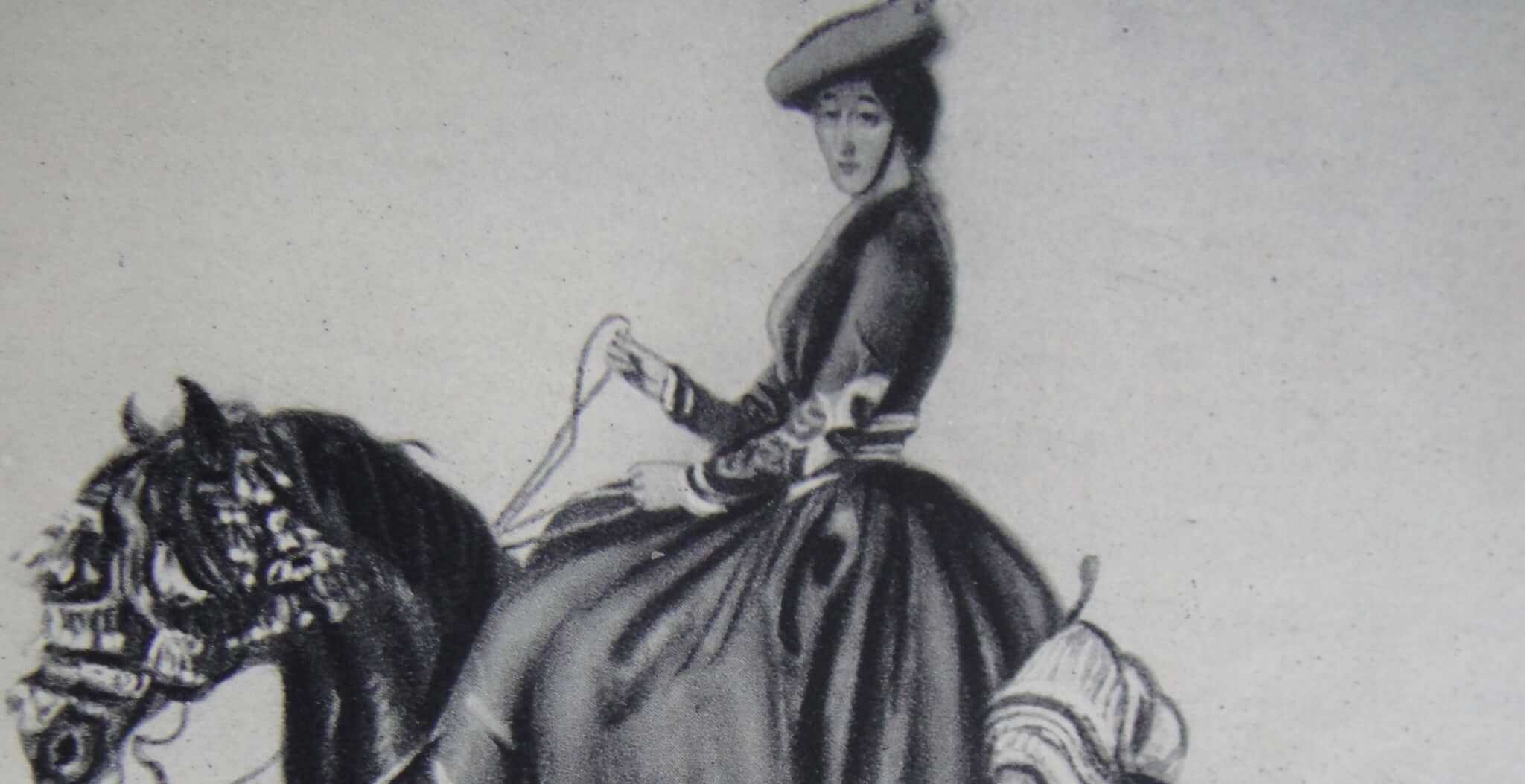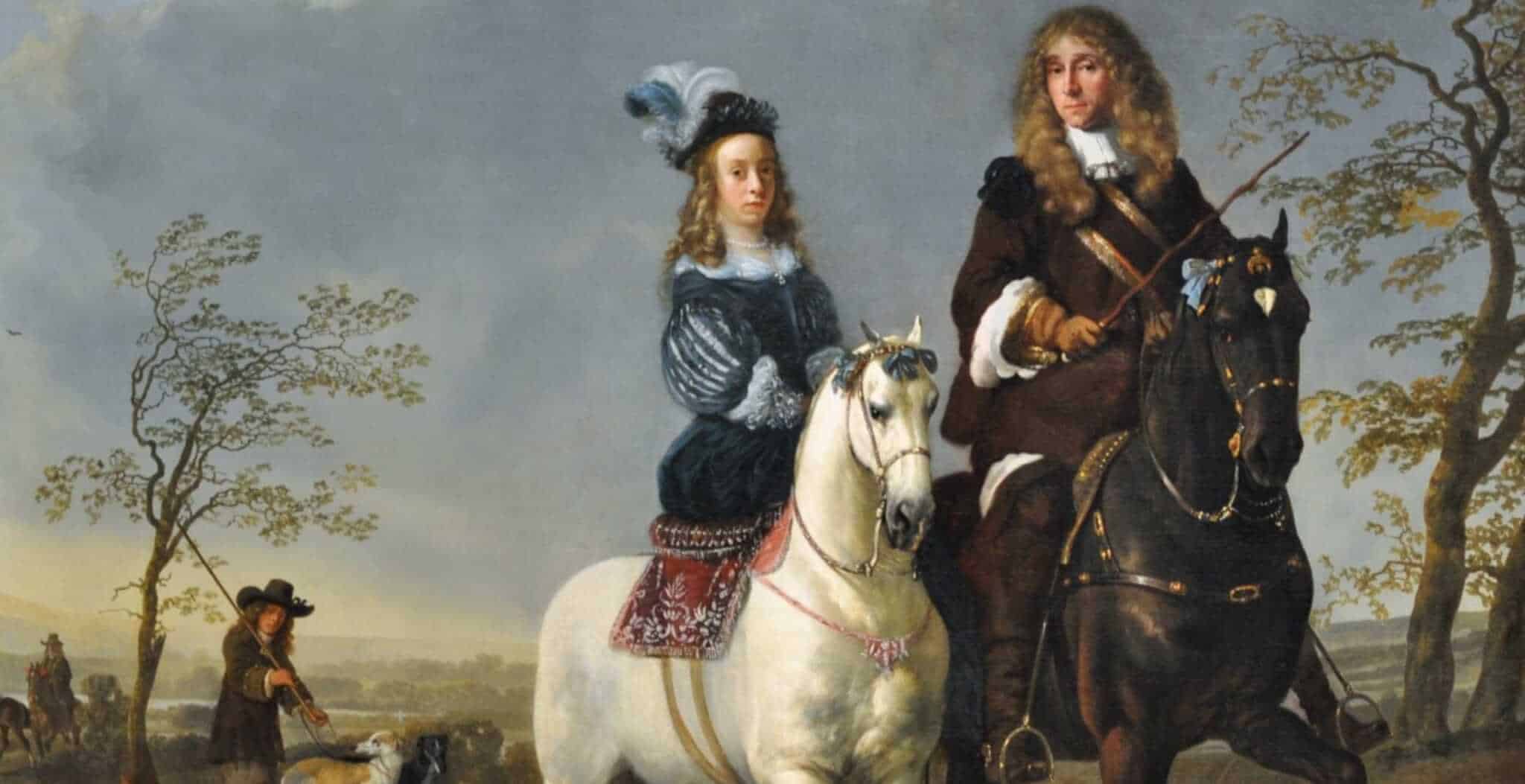For women, sitting aside on a horse dates back to antiquity. For the main part, men rode horses; women were merely passengers, sitting behind the men, either holding the man around the waist or sitting on a small padded seat or pillion. This was partly due to their long, heavy skirts; it was impractical to ride astride. Also riding side-saddle was seen to preserve the ladies’ modesty.
The idea of it being indecent for a lady to ride astride can be traced back to 1382, when Princess Anne of Bohemia rode side-saddle across Europe on her way to marry King Richard II. Riding side-saddle was seen as a way to protect her virginity. Soon it was considered vulgar for any woman to ride astride.
By the late Middle Ages, it had become obvious that for ladies to ride a horse, a saddle would have to be specially designed to allow the woman to control the horse but still maintain a proper level of decency.
The earliest functional side-saddle was a chair-like construction, where the woman sat sideways on the horse with her feet on a footrest, designed in the late 14th century. Catherine de Medici is said to have developed a more practical design in the 16th century. Rather than keeping both feet placed side by side on the footrest, she placed her right leg over the pommel of the saddle, so as to show off her shapely ankle and calf to their best advantage! Riding this way allowed the rider much more control of the horse and even allowed the rider to trot and canter safely.

Riding at speed, sitting aside
Over time further adjustments were made to the saddle, but it was the introduction of a second pommel in the 1830s that was revolutionary. This additional pommel gave women both increased security and additional freedom of movement when riding side-saddle. This allowed them to stay on at a gallop and even to jump fences while hunting and show jumping, whilst still conforming to the expected levels of propriety and modesty.
At this time it was almost exclusively ladies of the higher social classes who rode. Indeed until the 1850s, riding and dance were the only socially acceptable physical activities for girls and women of the aristocracy and upper classes.

Diagram showing the position of the legs when riding side-saddle
By the Victorian era, the posture of a woman riding side-saddle was very much as it is today. The rider sat astride, with the right hip back to allow the shoulders to fall into line. The right leg was placed on the front of the saddle, with the left leg bent and resting on the saddle and the foot in the slipper stirrup.
As for riding attire, it wasn’t until the late 16th century that a habit specifically designed for riding side-saddle was introduced. Before this time, usual day wear was worn for riding. The first ‘safety skirt’ was invented in 1875, to help prevent terrible accidents where women were caught by their skirts and dragged by their horses if they fell. These safety skirts buttoned along the seams and later developed into an apron skirt buttoned around the waist, just covering the legs (which were encased in breeches).
In the early 20th century it became socially acceptable for women to ride astride while wearing split skirts or breeches, and the side-saddle began to fall out of fashion. The rise of women’s suffrage also played a role; to the Suffragettes, riding side-saddle was a symbol of male domination. And so by 1930, riding astride had become totally acceptable and the preferred method of riding for women.

However, during the last few years there has been a revival in the art of riding side-saddle. You could call it the ‘Lady Mary’ effect: the fictional heroine of Downton Abbey hunts aside, and seems to have sparked a new interest amongst women riders. Groups such as the ‘Flying Foxes’ and ‘A Bit on the Side’ can be seen riding at displays around the country. Indeed, a new British side-saddle high jump record has just been set by Michaela Bowling – at 6ft 3in!







